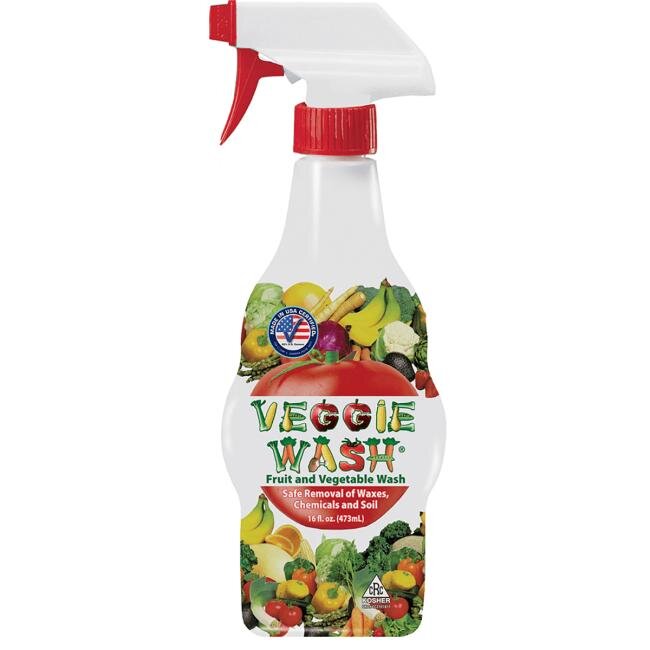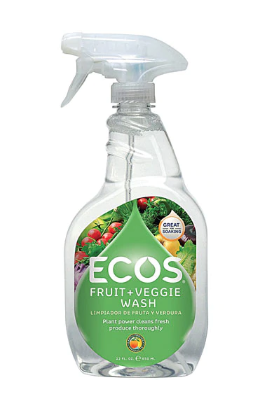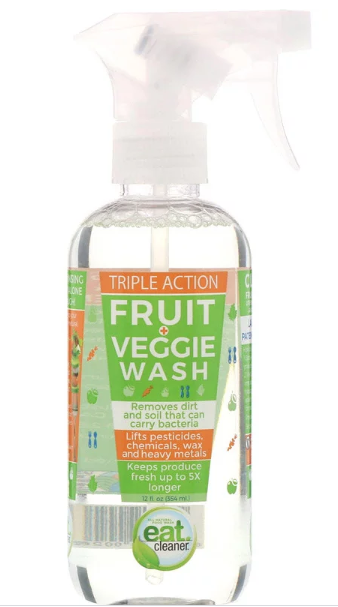Don’t paniC, it’s organic
If you wouldn’t spray chemicals into your own mouth then why would you consume foods sprayed with small amounts of toxic chemicals? Unfortunately for us, farmers cannot afford to lose their crops due to pesky little insects, so to offset the loss of their crops, they spray chemicals, pesticides, on the food which repel the insects. Thanks to this trend, we are now experiencing a serious cancer epidemic and evidence is growing that pesticide exposure is a key contributor.
why organic
The term “organic” means how a specific crop was grown and processed. While the true definition of organic may vary from country to country, 100% organic crops must be grown without the use of synthetic pesticides, bioengineered genes (GMOs), petroleum-based fertilizers, and sewage sludge-based fertilizers. Organic produce may not be perfect but is certainly a better choice than conventional. Chemicals such as fungicides, herbicides, and insecticides are widely used in conventional agriculture and residues remain on and in the food we eat. Organic has much less and the food is often fresher because it doesn't contain preservatives that make it last longer.
Organic produce contains fewer pesticides.
Organic food is often fresher and lasts longer.
Organic farming is better for the environment.
Organic food is GMO free.
I understand that buying organic may be a bit pricey for some to purchase but luckily in most cases you don't always need to. Every year the U.S. Department of Agriculture’s publishes a guide based on analysis of the Pesticide Data Program (PDP) report. The USDA and Environmental Protection Agency work together to identify foods to be tested for pesticides on a rotating basis.
Environmental Working Group
The Environmental Working Group (EWG) is a non-profit, non-partisan organization dedicated to protecting human health and the environment. They research what’s in our tap water, the safety of our cosmetics, genetically modified organisms (GMO / GE), and the amounts of pesticides in and on our food, among other things so I of course support their work. Their guide is based on results of more than 35,200 samples tested by the U.S. Department of Agriculture and the Food and Drug Administration and is updated every year. Thank you EWG!
Foods with the most amount of pesticide residue
Strawberries
Spinach
Kale
Nectarines
Apples
Grapes
Peaches
Cherries
Pears
Tomatoes
Celery
Potatoes
Try to always purchase these foods organic. More than 98% of samples from non-organic strawberries, peaches, potatoes, nectarines, cherries, and apples tested positive for residue of at least one pesticide. Conventional spinach samples had, on average, almost twice as much pesticide residue by weight compared to any other crop!
Foods with the least amount of pesticide residue
Avocados
Sweet corn
Pineapple
Frozen sweet peas
Onions
Papaya
Eggplant
Asparagus
Kiwi
Cabbage
Cauliflower
Cantaloupe
Broccoli
Mushrooms
Honeydew melon
Luckily you can get away with purchasing these foods non-organic which can also save you a lot of money. I actually prefer non-organic avocados over organic and have found that the non-organic avocados are more dense and “buttery” tasting and the organic avocados tend to be more “watery”.
Avocados and non-GMO sweet corn turned out to be the cleanest. Only 1% of samples showed any detectable pesticides. More than 80% of pineapples, papayas, asparagus, onions, and cabbage had no pesticide residues. When purchasing papaya, make sure to choose the non-GMO varieties such as Royal Star, Mexican red, Caribbean Red, Maradol, Singapore Pink, and Higgins variety. Martha’s Best is a great papaya delivery company to purchase from.
understanding gmos
Genetically modified organisms (GMOs) are living organisms whose genetic material has been artificially manipulated in a laboratory through genetic engineering. This creates combinations of plant, animal, bacteria, and virus genes that do not occur in nature or through traditional crossbreeding methods. The ongoing debate about the effects of GMOs on health and the environment is most definitely a controversial one.
GMOs are most commonly found in U.S. crops such as soybeans, alfalfa, squash, zucchini, papaya, and canola, and are present in many breakfast cereals and much of the processed food that we eat. If the ingredients on a package include corn syrup or soy lecithin, chances are it contains GMOs.
The use of toxic herbicides like Roundup (glyphosate) has increased 15 times since GMOs were introduced. While the World Health Organization announced that glyphosate is “probably carcinogenic to humans,” there is still some controversy over the level of health risks posed by the use of pesticides. If you purchase genetically modified foods like corn and/or soy these plants were engineered to ward off insects. If it kills an insect that starts to eat it, what do you think it does to humans?
why local
Unlike organic standards, there is no specific definition for “local food”. Local food could be grown in your backyard, your community garden, or from your local farmers market. Certain times of the year it can be quite easy to find local produce. There are so many benefits to consuming local produce.
Locally grown food is full of flavor and nutrients.
Eating local food supports your local economy and local farmers.
Local growers can tell you exactly how the food was grown.
Local food is better for the environment as it travels less distance to you.
Choosing local food promotes a safer food supply
Keep in mind that small local farmers may use organic growing methods but sometimes cannot afford to become certified organic so always be sure to ask how their produce was grown and if it was sprayed or not. Supporting your local farmer’s market is key to improving our food quality and nutrition.
hybrid fruits
A seedless watermelon is actually a sterile hybrid that is created by crossing male pollen for a watermelon, containing 22 chromosomes per cell, with a female watermelon flower with 44 chromosomes per cell. It’s created from cross-pollination, not genetic modification.
Hybridization is simply the mating of two breeds or cultivars within a single species, or between different species within the same genus. Hybrid fruits are made by naturally crossbreeding two separate varieties to create a new one. Hybridization can occur spontaneously in nature through cross-pollination or can be practiced by farmers and gardeners. The same goes for when we breed animals. Hybrid fruits are not GMO or use genetically modified organism technology. While hybrids are crossed manually in the field, GMOs are created using high-tech methods such as gene splicing, sometimes combining genes from different species to yield organisms that could not occur in nature. Hybrids use traditional pollination that can ordinarily occur in nature. With controlled pollination, cultivars can breed new generations of fruiting plants with increasingly desirable characteristics It is a myth that hybrid fruits and vegetables are not good for your health. The combining of genetic material to create something different has been taking place since the beginning of life on our planet.
Below are a list of popular hybridized fruits that you may be eating without even knowing:
Lemon
Sweet orange
Grapefruit
Cavendish banana
Seedless fruit varieties such as watermelon, oranges, and grapes
Cotton candy grapes
Tangelo
Clementine
Pluot
Boysenberry
Pineberry
Broccolini
eat seasonally
There are so many benefits to eating foods that are in season. For one, they are much more affordable since these foods are more abundant and even more nutrient dense due to its environment and growing conditions. Foods that are in season even taste better and don’t have to travel as far to get to your table. You can even grow some of these foods in your own backyard which reduces your carbon footprint and supports a more geographically sustainable food economy. By choosing local and seasonal produce, we help to create a healthier world! This list was created for the foods grown in Southern California with a subtropical climate. To find seasonal produce in your specific area, please visit: www.seasonalfoodguide.org
how to wash your produce
If you’re not able to always find or afford organic food, then there is no reason to panic. Fresh produce is still better than no produce. You can still do your very best to remove as much chemical residue as you can with the following recipe or purchase a plant based fruit and vegetable cleaner but I prefer the simple, old fashioned way with minimal ingredients. To make your own fruit and vegetable wash, you will need the following (try to keep these items in your pantry at all times):
White vinegar or apple cider vinegar (I prefer Braggs with the mother)
Lemon juice
Food grade hydrogen peroxide
Baking soda
Glass spray bottle
To clean your produce you have many options. First, fill one spray bottle with a solution of 1 cup vinegar to every 4 cups water inside your spray bottle, then add a tablespoon of lemon juice. Shake well to combine. Spray your produce: Place your fruit or vegetable in a colander in the sink.
Fill one spray bottle with hydrogen peroxide, set aside. Fill up a bowl of warm water with 1-2 tablespoons of baking soda. As the water is filling up the bowl, spray the produce with hydrogen peroxide and watch the water bubble over. Let soak for 5 minutes depending on the.
Spraying methods generally work best with hard produce such as apples, apricots, peppers, celery, cucumbers, nectarines, peaches, pears, plums, and zucchini. Delicate produce such as leafy greens as well as berries, cherries, grapes, chili peppers are better off soaked and submerged in a bowl of water with 1 tablespoon of apple cider vinegar for every cup of water. Allow them to soak for 5 minutes, then take out and scrub with a dedicated brush and rinse.
If you don’t want to make a homemade produce wash solution or if you are in a pinch then the fruit and vegetable washes above will definitely do the trick for you.
my Final thoughts
Do I always buy organic? No way. It’s nearly impossible to eat 100% organic 100% of the time, unless you have an unlimited food budget. Either way, we don’t live in a perfect world or have a perfect system worked out just yet so don’t feel guilty if you can’t follow this list perfectly. Also remember that just because a food or product is listed as “organic” does not make it healthy. Organic junk food is still not healthy. The most important thing we need to focus on is how our food was grown and how minimally it was processed.
happy shopping
You don’t have to spend all of your money on organic food, just learn how to shop smarter. Split your produce list up with essential organics like berries don’t buy organic avocados. Eat seasonally and support your local farmer. By purchasing less foods that are sprayed with pesticides, we are telling farmers the type of crops that we can to consume. The consumers dictate supply and demand so we are in control of changing our food system every time we purchase food.




















